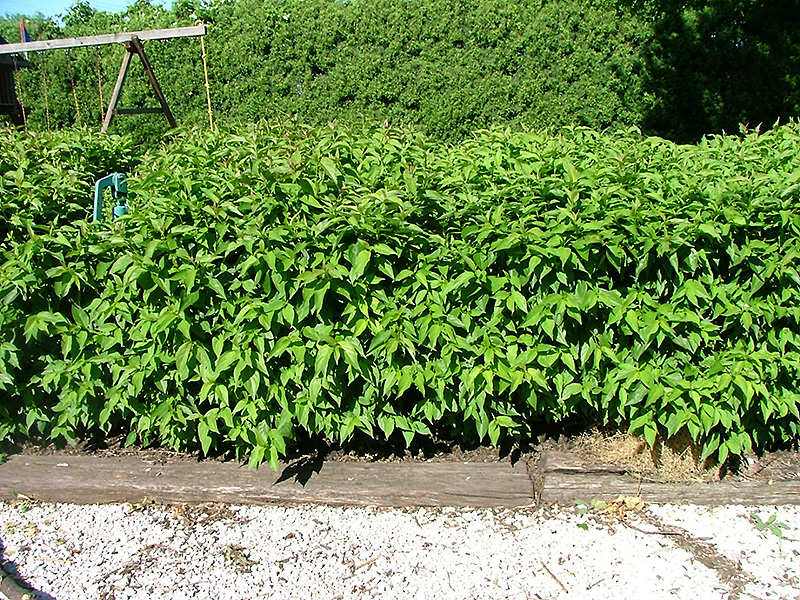>> Home
Height: 5 feet
Spread: 5 feet
Sunlight:
![]()
![]()
Hardiness Zone: 3
Description:
An underutilized and quite showy shrub for general garden or massing use; this is a dwarf, globular form; white flowers in spring, white berries in fall on showy pink stems and good fall color; very adaptable, but suckers vigorously
Ornamental Features
Huron Gray Dogwood is primarily valued in the landscape or garden for its ornamental globe-shaped form. It is smothered in stunning clusters of creamy white flowers at the ends of the branches from late spring to early summer. It has grayish green deciduous foliage. The pointy leaves turn an outstanding burgundy in the fall.
Landscape Attributes
Huron Gray Dogwood is a multi-stemmed deciduous shrub with a more or less rounded form. Its relatively fine texture sets it apart from other landscape plants with less refined foliage.
This is a high maintenance shrub that will require regular care and upkeep, and is best pruned in late winter once the threat of extreme cold has passed. It is a good choice for attracting birds to your yard. Gardeners should be aware of the following characteristic(s) that may warrant special consideration;
- Suckering
Huron Gray Dogwood is recommended for the following landscape applications;
- Mass Planting
- Hedges/Screening
- General Garden Use
- Naturalizing And Woodland Gardens
Planting & Growing
Huron Gray Dogwood will grow to be about 5 feet tall at maturity, with a spread of 5 feet. It tends to fill out right to the ground and therefore doesn't necessarily require facer plants in front, and is suitable for planting under power lines. It grows at a slow rate, and under ideal conditions can be expected to live for 40 years or more.
This shrub does best in full sun to partial shade. It is an amazingly adaptable plant, tolerating both dry conditions and even some standing water. It is not particular as to soil type or pH. It is highly tolerant of urban pollution and will even thrive in inner city environments. Consider applying a thick mulch around the root zone in winter to protect it in exposed locations or colder microclimates. This is a selection of a native North American species.
